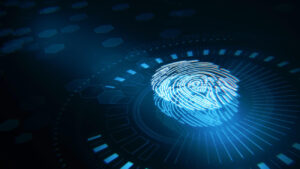The author of this article is Bahaa Abdul Hadi. As an Identity Management expert, Bahaa Abdul Hadi always shares his experience on various platforms. This time he talks about how pandemic impacted time and attendance solutions market.
The COVID-19 pandemic has affected every person and organization on Earth. It’s also apparent that the world will alter after this crisis. Businesses that shuttered or went remote during the pandemic and those that stayed open prioritize health and safety.
Organizations have prioritized technology solutions to reduce virus and microbe spread to meet these issues. These new technologies will emphasize touchlessness in doors, sinks, and elevators. They’re permanent. After the pandemic, company owners and other leaders will make permanent adjustments to prevent a recurrence and new health hazards.
Spotlight
Time and attendance innovations are being studied. These solutions commonly include access control devices to track employees’ start and end timings. Card-based products require touch. HR and security specialists must find a safer approach to collect this data.
Today, biometrics and proximity devices are the most popular contactless time and attendance solutions.
Facial recognition appeals more.
Facial recognition is the leading biometric solution and will continue to lead. Iris identification has been hampered by its misperception as a retina scanner, a feared technology.
Many organizations cannot afford iris recognition, like palm vein scanners. Fingerprint readers are still successful, but in a touchless world, they may not increase. Facial recognition is strong due to these restrictions and its rising accuracy.
According to the National Institute of Standards and Technology, facial recognition accuracy has increased over the past decade (NIST). Search failures reduced 96% from 5% in 2010 to 0.2% in 2018.
Facial recognition software processes geometric vectors to find matches. Most software reads eye and chin-to-forehead distances. The software may read 50–75 factors, depending on its sophistication. Each analysis is done individually, and databases only record the physical information in the photographs and the identities of the people in them.
Proximity solutions rising
In a contactless era, proximity technology will grow in identity identification. This category includes proxy cards, devices, and smartphone apps. Mobile solutions requiring less administrative support are likely to outperform non-contact cards.
Mobile card solutions have additional benefits as well. People are more likely to lose a card or gadget than their phone, which is usually within reach.
Mobile apps may be automatically and often updated, ensuring all employees use the latest version. The cost is the main barrier. However, devices that attach to RF card readers and convert mobile access cards’ Bluetooth signals to RF signals can help.
New global time and attendance
After the pandemic is over, the world’s normalcy remains unknown. When it does, the world will be different from how it was in 2020.
Time and attendance data collection will change when workers, visitors, and others return to their companies’ premises. Contactless access devices for identity identification at entry and exit will lead to this progress.
The article has been published by the editorial board of the Identity Herald and authored by Bahaa Abdul Hadi. For more information please visit www.identityherald.com




